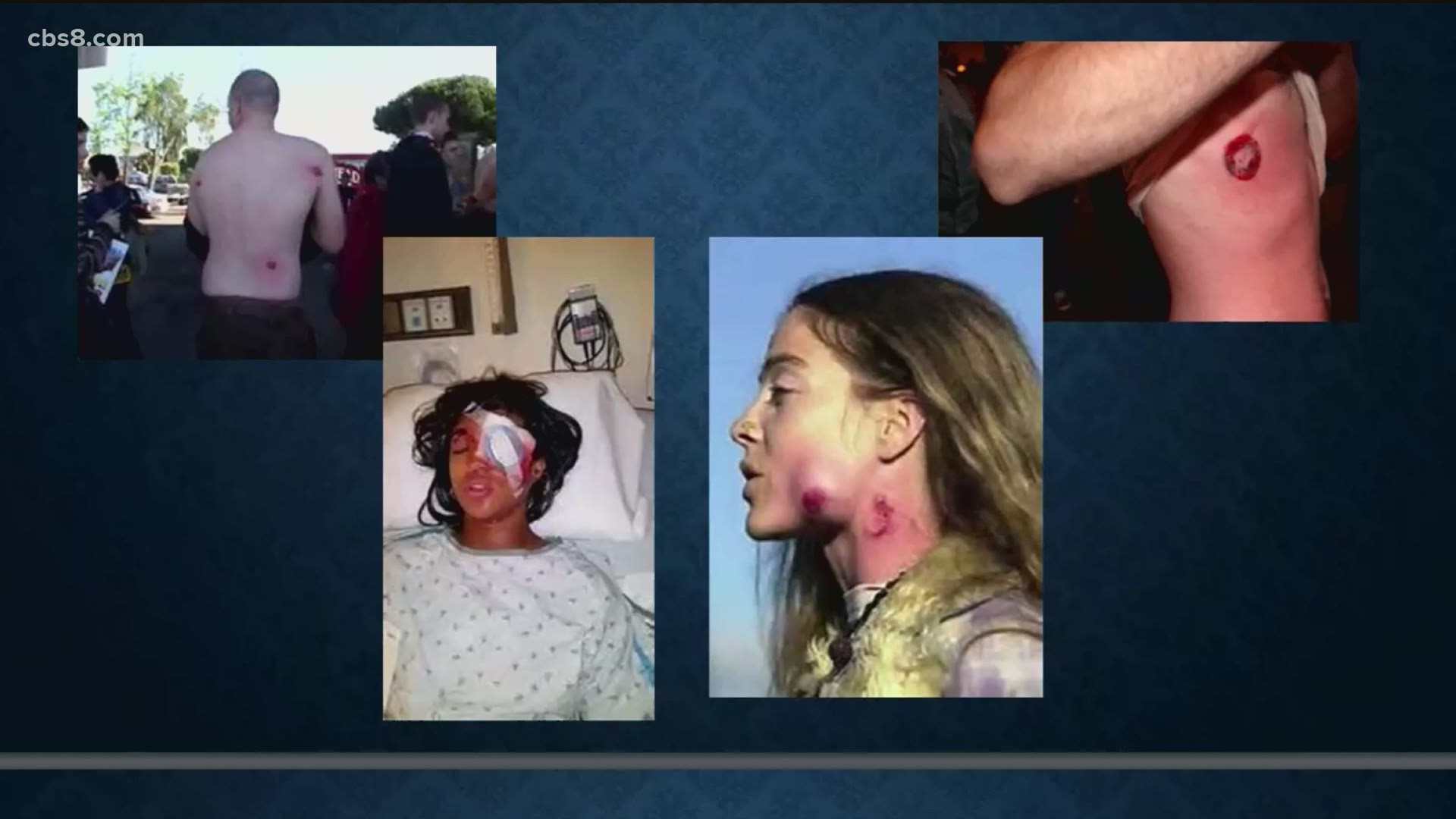SAN DIEGO COUNTY, Calif. — Two local elected officials are leading the way today on legislation to set clear standards on how rubber bullets should and should not be used by law enforcement agencies after days of bloody images of protesters injured by the projectiles -- including in La Mesa.
Assemblywoman Lorena Gonzalez, D-San Diego, and assemblymembers Shirley Weber, D-San Diego, Ash Kalra, D-San Jose, and Sen. Scott Wiener, D-San Francisco, announced on Thursday that they would pursue legislation controlling the sometimes deadly projectiles.
"No one who is simply exercising their right to protest should face possible injury or death because officers are indiscriminately firing rubber bullets into a crowd," Gonzalez said. "Breaking a city-imposed curfew is not a sufficient basis for use of rubber bullets. Crowd control where there is no rioting is not proper grounds to use rubber bullets. It is past time for the state of California to set clear standards on when and how these bullets are used by law enforcement."
Rubber or plastic bullets, also called kinetic impact projectiles, are designed for use by law enforcement for crowd control. They are designed to be shot at an angle to the ground so they will ricochet into a person's legs. Protests around the nation have reported law enforcement shooting the projectiles directly into crowds.
Leslie Furcron, 59, was shot between the eyes by a "non-lethal" round while protesting in La Mesa on May 30. Furcron, a grandmother, remains in a medically induced coma and may lose one of her eyes, say her lawyers, who are calling on the officer who shot the projectile to face criminal charges.
Rubber bullets are used to respond to protests and are designed to incapacitate a person by inflicting pain or sub-lethal injury, but researchers say rubber and plastic bullets should not be used for crowd control. According to a study published in The BMJ -- a leading British medical journal -- in 2017, 3% of people hit by rubber bullets died of their injuries and 15% were permanently injured. Rubber bullets are only rubber on the outside but often contain a metal center that can cause serious bodily injury or death.
"Millions of Americans have taken to the streets over the past week rightfully demanding change and sacrificing their safety in support of Black Lives Matter to take a stand against police brutality and institutional racism. As lawmakers, we cannot stand by idly while people are being brutalized as they are exercising their free speech," Kalra said.
"Rubber bullets should not be used to suppress freedom of assembly, peaceful protest, or to facilitate curfews and disperse people demonstrating. Taking away these tools that cause injury and escalate tensions is the first of many necessary changes that need to happen if we are to truly claim to support communities of color and address the persistent problems facing Black Americans," Kalra said.
At a closer range, rubber bullets can penetrate the skin, break bones, fracture the skull and cause significant internal and external injuries.
"These weapons have the potential to cause severe injuries and death," the BMJ report found.
At longer distances, they can unintentionally injure bystanders and nonviolent demonstrators.
"Over the past week, we've all watched with horror as police violently target protesters and journalists with rubber bullets for no apparent reason, sending many to the hospital with serious injuries," Wiener said. "We need to reevaluate use of rubber bullets by California law enforcement. We need more de-escalation and less military-grade riot gear, rubber bullets and tear gas."
According to Gonzalez's office, there is limited regulation on the development of these weapons. Manufacturers are not required to keep records on injuries from their products in development, field trials or actual use. There is also no legal requirement for law enforcement to collect data on injuries from rubber bullets or document their use of rubber bullets.
The United States began using rubber and plastic bullets during the Vietnam War protests, but stopped the use in protests after a fatality in 1971. They were reintroduced in the early 1980s.
Assemblywoman Lorena Gonzalez leads legislative push against rubber bullets
San Diego leaders announced they would pursue legislation controlling the sometimes deadly projectiles.

